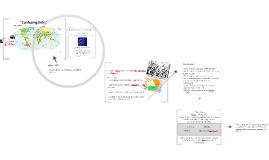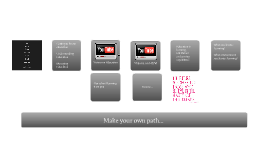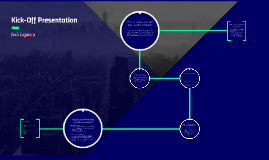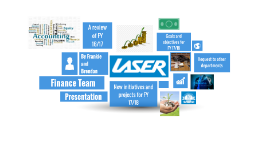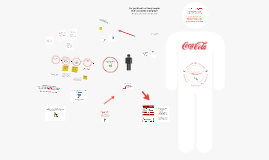Kick-Off Presentation
Transcript: Zoom out for more assets Asset library Reporting Schedule Communication Channels Utilizing a variety of communication channels ensures that all team members are kept informed. Channels can include email updates, project management tools, and video conferencing to foster collaboration and knowledge sharing. An established reporting schedule sets expectations for progress updates. Regular meetings, weekly reports, and milestone reviews will ensure transparency and prompt identification of any issues. Communication Plan Effective communication is vital for the success of any initiative. A well-structured communication plan facilitates clarity, engagement, and accountability among team members and stakeholders. Stakeholder Engagement Critical Deadlines Financial Resources Budget Overview Deadlines are essential to project management, serving as drop-dead dates for specific deliverables. Setting realistic deadlines ensures accountability and encourages timely completion of tasks. Each phase of the project must adhere to these deadlines to avoid cascading delays. Goals and Objectives The total financial resources allocated for this initiative are $500,000, encompassing grants, sponsorships, and internal funding. This diverse funding base ensures project sustainability and supports various phases of execution while minimizing reliance on a single source. Effective stakeholder engagement is crucial for project success, ensuring that all parties are aligned with the goals and objectives. Engaging stakeholders properly can lead to enhanced collaboration and increased project support. Key Roles Explained The budget overview provides insights into financial resources available for the initiative and how these funds are allocated across key project areas. Effective budget management is essential for successful project execution. The Project Manager oversees project timelines and budget adherence, while Team Leads guide their respective areas. Developers implement the technical aspects, and Support Staff ensures smooth operations during execution. Establishing clear goals and objectives is essential for ensuring the successful execution of any initiative. With defined targets, the team can align efforts, measure progress, and maintain focus throughout the project. Key Milestones Navigating the Project Timeline Defining Our Team Roles Team Structure Overview Milestones mark significant points in the project, helping to assess progress. Examples include completing the initial project plan, securing necessary approvals, and launching pilot phases. Timely achievement of these milestones is crucial for maintaining momentum and stakeholder confidence. Identifying Potential Risks Identifying Stakeholders Engagement Strategies Potential risks include unforeseen project delays, budget overruns, and resource shortages. Additionally, factors such as regulatory changes or stakeholder resistance can impact project outcomes significantly. The project team is organized into distinct roles: Project Manager, Team Leads, Developers, and Support Staff. Each role plays a crucial part in ensuring the project runs smoothly and meets its objectives. A well-structured project timeline serves as a roadmap, highlighting critical milestones and deadlines essential for successful execution. Understanding these components ensures that project deliverables are met on time and within scope. Stakeholders include anyone impacted by the project, from team members and management to clients and suppliers. A comprehensive stakeholder identification process is essential for understanding their needs and expectations to align them with project goals. Strategies for engaging stakeholders effectively include regular communication, feedback loops, and involvement in decision-making processes. Tailored engagement plans cater to specific stakeholder interests, ensuring support and minimizing resistance. Types of Risks A well-structured team enhances collaboration and improves project efficiency. Understanding team dynamics and individual contributions is vital for success. Common types of risks include technical risks related to technology changes, organizational risks such as team dynamics, and external risks like market fluctuations. Each type requires tailored assessment and management strategies. Risk Management Monitoring Risks Mitigation Strategies Effective risk management is crucial for the success of projects, as it helps identify potential obstacles and prepares the team to face them proactively. Understanding risks can lead to informed decision-making and enhance project resilience. Continuous monitoring of identified risks is essential. Utilizing risk registers and team feedback mechanisms can provide early warnings for potential issues, allowing timely interventions. Effective mitigation strategies involve early identification, prioritization, and creating contingency plans. Regular monitoring and adjustment of these strategies ensure that risks are








